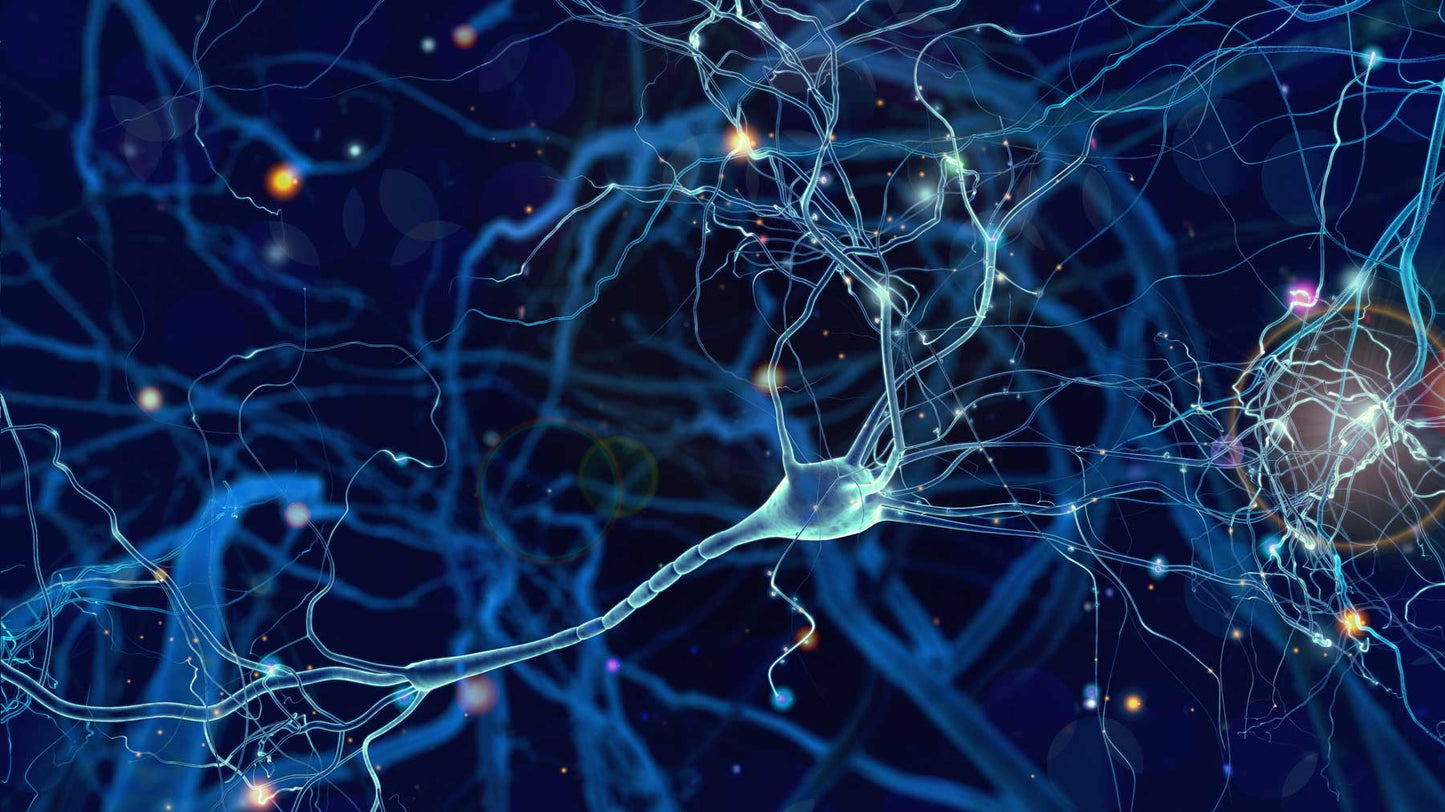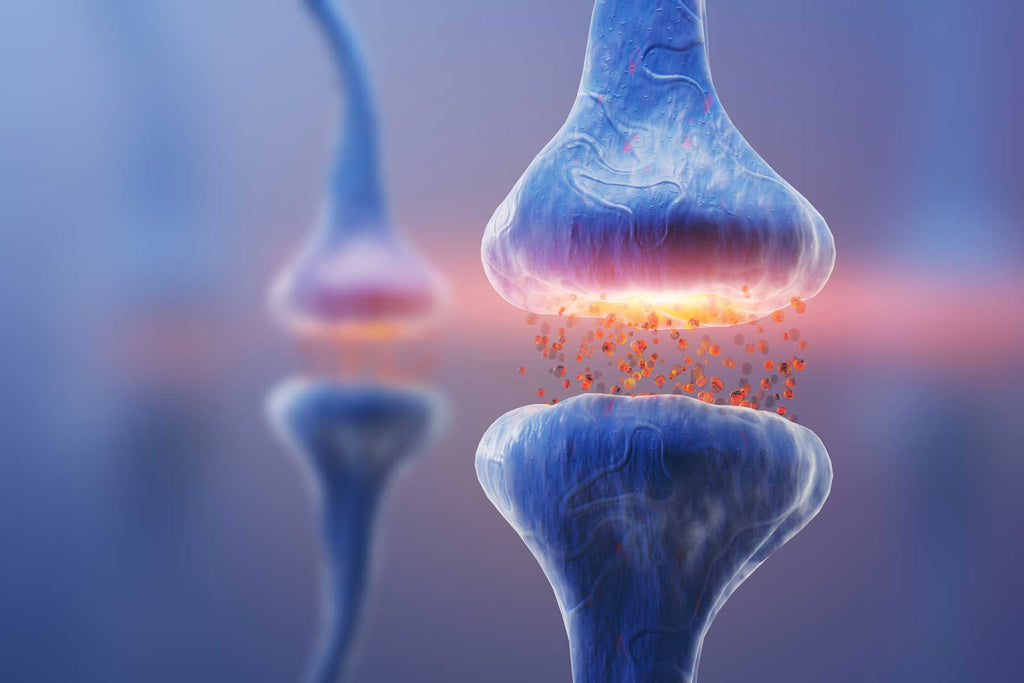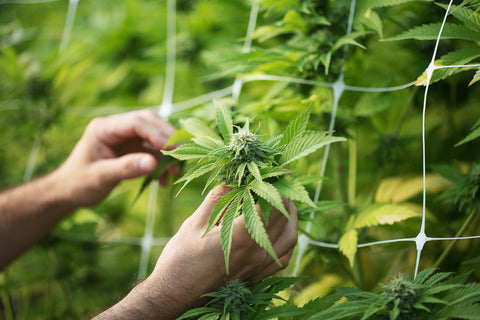
Why are humans sensitive to compounds found in the cannabis plant, such as THC and CBD? It all relates to our endocannabinoid system. Most mammals, fish, birds and reptiles have endocannabinoid systems and naturally produce compounds in their brains called endocannabinoids. The prefix endo comes from the Greek word meaning within, that is cannabinoids that originate from within the body.
“But cannabis is not the reason why the endocannabinoid system exits,” describes Ruth A. Ross, PhD researcher of cannabinoid molecular pharmacology, and Professor & Chair at University of Toronto. The endocannabinoid system is important for brain development. It evolved to maintain homeostasis in the brain, including the formation and maintenance of synapses, electrical connections that allow neurotransmitters to send information. “So if you've lived a life or in a community where cannabis isn't a thing, you still have a wonderful, functional endocannabinoid system.”
Cannabis is an amazing plant because it adapted to produce compounds that mimic chemicals inside our brains. These compounds possibly serve as a defense mechanism to prevent being consumed by foraging herbivores. Or, they appeared because of a codependent evolutionary relationship with human beings.
Receivers
Multiple areas of the human brain, nervous system, and immune system contain endocannabinoid receptors. The two most understood are CB1 and CB2. “When the endocannabinoids bind to these, you get a response. So the same lock and key scenario: the endocannabinoids are like the key, and then the receptor is the lock that unlocks these downstream responses,” says Ross.
 Most psychoactive, mental and perceptual, effects of cannabis can be attributed to CB1 receptor activation. The CB1 receptor is abundant in the central nervous system. “When the endocannabinoids bind to these, you get a response. So the same lock and key scenario: the endocannabinoids are like the key, and then the receptor is the lock that unlocks these downstream responses,” says Ross.
Most psychoactive, mental and perceptual, effects of cannabis can be attributed to CB1 receptor activation. The CB1 receptor is abundant in the central nervous system. “When the endocannabinoids bind to these, you get a response. So the same lock and key scenario: the endocannabinoids are like the key, and then the receptor is the lock that unlocks these downstream responses,” says Ross.
CB2 is mostly outside of the central nervous system in the immune system. It appears to be a site where CBD and the terpene beta-carophyllene can bind, reducing inflammation and some kinds pain. The CB2 receptor’s role in inflammation is not fully understood, but it is believed to have an influence on tissue inflammation. Both in the case of decreasing inflammation, such as swelling and itching, or increasing inflammation in the case of a fighting an infection.
Messengers
Endocannabinoids bind to both the CB1 and CB2 receptors. Endocannabinoids are fatty acid neurotransmitters synthesized on demand. They are not stored in cells, rather they are made on demand and then quickly broken down by enzymes. Endocannabinoids are released to modulate synaptic connections in the brain. Both increasing neuron activity as a precursor to critical thinking, and also decreasing neuron activity to protect the brainfrom too much excitation. For example, during seizures and strokes, over-excitation is toxic to cells and the endocannabinoid system stabilizes and calms them down. This dual nature of the endocannabinoid system explains why cannabis can have such wide-ranging, even opposing effects, in different people and situations.
 There are many known endocannabinoids, but only a few are understood. The first discovered was anandamide. Its name is derived from the Sanskrit word ananda, which means bliss, joy, and delight. It is relevant to functions associated with learning, memory, movement, appetite, fertility, and mood. 2-AG, or 2-Arachidonoylglycerol, is another endocannabinoid discovered to have a modulatory role. 2-AG may also be involved in the brain’s reward center.
There are many known endocannabinoids, but only a few are understood. The first discovered was anandamide. Its name is derived from the Sanskrit word ananda, which means bliss, joy, and delight. It is relevant to functions associated with learning, memory, movement, appetite, fertility, and mood. 2-AG, or 2-Arachidonoylglycerol, is another endocannabinoid discovered to have a modulatory role. 2-AG may also be involved in the brain’s reward center.
Cannabis is not the only plant that shares a complicated love affair with humans. Compounds similar to anandamide have been found in dark chocolate. 2-AG-like compounds are also found in dairy products and mollusks. Perhaps this is why these popular food items have a reputation for their comforting and stimulating effects.
Mimics
Cannabis produces cannabinoids, chemical compounds that mimic the endocannabinoids that already exist in the human brain. As Ross explains, cannabinoids act “as an alternative key for the endocannabinoid receptor, so it fits into the lock…and what it does when it binds to that receptor is it either mimics the endocannabinoid system or it disrupts the endocannabinoid system.”
There are over 100 known cannabinoids, but the most abundant ones are THCA (tetrahydrocannabinolic acid) and CBDA (cannabigerolic acid). As author and educator Ed Rosenthal clarifies, when cannabinoid acids are exposed to heat, from a lighter, a vaporizer, or an oven, they decarboxylate. Decarboxylation turns an acid into a neutral, removing the “A.” Hence, THCA becomes THC (tetrahydrocannabinol) and CBDA becomes CBD (cannabidiol). In this form the cannabinoids are biologically available. In Rosenthal’s work, he proposes that cannabinoids can be strategically used to tune the endocannabinoid system towards desired responses.
 However, these mimics do not work exactly as the endocannabinoid natives do. They trigger the receptors with slightly different results, and they take longer for enzymes to break down compared to anandamide and 2-AG. This is why the effects of CBD last from 30 minutes to 6 hours, depending on the mode of consumption and amount consumed. The interplay between enzymes and cannabinoids is also significant towards the overall response. For example, it’s speculated that CBD’s anti-anxiety properties are attributed to its ability to inhibit the enzymes that break down anandamide, allowing anandamide to persist longer. Inadvertently increasing the amount of endocannabinoids inside the brain.
However, these mimics do not work exactly as the endocannabinoid natives do. They trigger the receptors with slightly different results, and they take longer for enzymes to break down compared to anandamide and 2-AG. This is why the effects of CBD last from 30 minutes to 6 hours, depending on the mode of consumption and amount consumed. The interplay between enzymes and cannabinoids is also significant towards the overall response. For example, it’s speculated that CBD’s anti-anxiety properties are attributed to its ability to inhibit the enzymes that break down anandamide, allowing anandamide to persist longer. Inadvertently increasing the amount of endocannabinoids inside the brain.Cannabis is often used as a way to alleviate mental and physical symptoms in a way that is inline with the brain’s own natural, molecular processes. The study of the endocannabinoid system is undergoing a resurgence of interest by the scientific community. New discoveries are made every day. What is clearer now more than ever is that this botanical curiosity holds a lot of promise. Through the study of cannabinoids, the cannabis plant is helping us develop a better understanding of ourselves.
References
Elphick, M. R. (2012). The evolution and comparative neurobiology of endocannabinoid signalling. US National Library of Medicine National Institutes of Health. doi: 10.1098/rstb.2011.0394
Rosenthal, E. (2010). Marijuana Growers Handbook. Oakland, CA: Quick American.
Rosenthal, E. (2019, January 28). Cannabinoids: THC and CBD. Retrieved March 26, 2020, from https://www.edrosenthal.com/the-guru-of-ganja-blog/cannabinoids-thc-cbd
Ross, R. A. (2019, January 19). Demystifying the endocannabinoid system. Retrieved March 26, 2020, from https://www.ted.com/talks/ruth_ross_demystifying_the_endocannabinoid_system/transcript?language=en
Walker, O. L. S., Holloway, A. C., & Raha, S. (2019). The role of the endocannabinoid system in female reproductive tissues. Journal of Ovarian Research, 12(1). doi: 10.1186/s13048-018-0478-9

Informative read, thank you
Great read.
People have been using cannabis for thousands of years! It’s great to see modern science and its new insight confirm why they did! If you look at a list of all the symptoms that can be treated by this ONE plant in it’s simplest, natural dried form it’s astounding. I can’t think of any natural or even synthetic material that has such a wide range of healing properties. Sometimes it seems like a large amount of the medicines we have today are just redundant modern confections to replace something we have possessed for millennia.